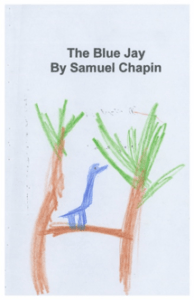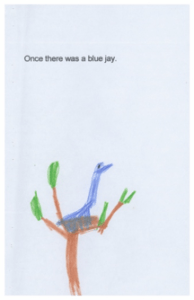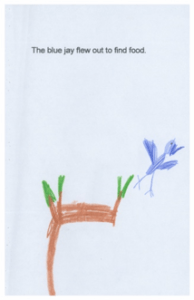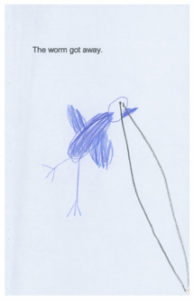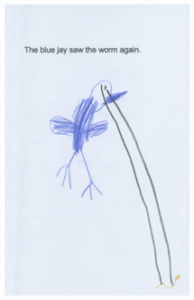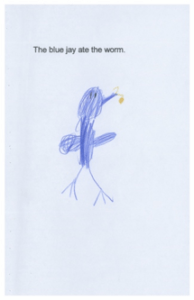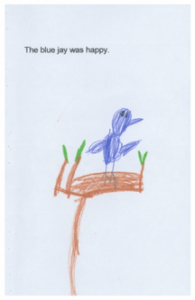Storytelling, A-B-T, and Compelling Case Studies
By David Chapin
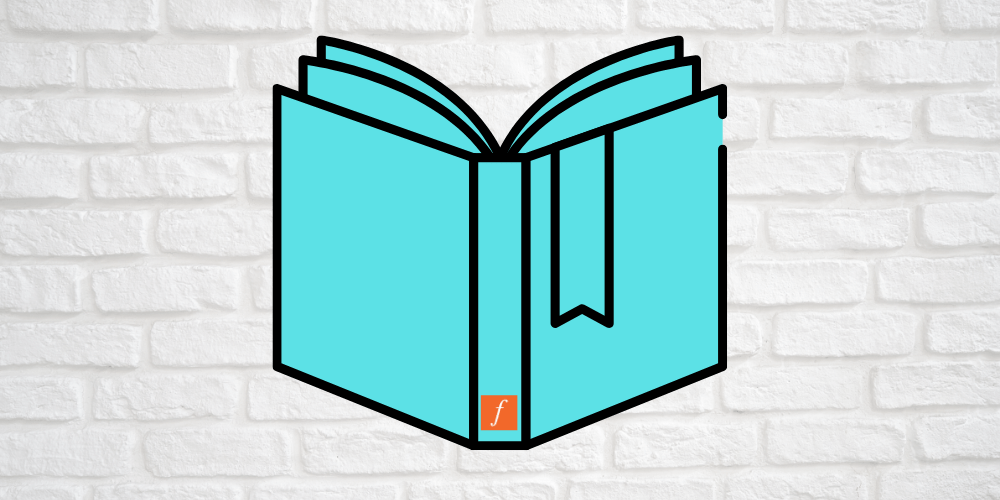
SUMMARY
VOLUME 9
, NUMER 10
Creating compelling case studies can be straightforward, if you follow the And-But-Therefore (A-B-T) template that I introduced in the last issue. Scientists are very familiar with using peer-reviewed papers to communicate, but these papers are written to prioritize accuracy over engagement, so peer-reviewed papers make a very poor template for use in our case studies. Because scientists are not used to writing for engagement, the A-B-T template is very useful when creating marketing messages or effective case studies. In this issue I examine the five key questions and the one crucial constraint that must be addressed when using the A-B-T template.
Creating sticky stories
In the last issue, I unveiled the secret to creating sticky stories. Sticky stories all share similar structures, and this has been used by storytellers since pre-history to captivate audiences. But the structure that you must master is actually hard to see, unless you know how to look for it. You see, stories can be so compelling that they anesthetize our brains.
The invisibility of story structure
Compelling stories distract us; they tend to camouflage the structure that makes them so effective.
Lisa Cron, in Wired for Story, The Writer’s Guide to Using Brain Science to Hook Readers from the Very First Sentence, pointed out that stories tend to “anesthetize” certain portions of our brains, making it difficult to analyze their precise structure:
She goes on:
“So it’s no surprise that we tend to be utterly oblivious to the fact that beneath every captivating story, there is an intricate mesh of inter-connected elements holding it together, allowing it to build with seemingly effortless precision.”[ii]
And:
“It’s only by stopping to analyze what we’re unconsciously responding to when we read the story – what has actually snagged our brain’s attention – that we can then write a story that will grab the readers brain.”[iii]
A-B-T story template
There is a clear structure for almost every compelling story. This structure can be encapsulated in a simple and powerful template. If you master its use, you’ll have an amazing tool at your fingertips.
This template can be written as:
_____________ and _____________, but _____________, therefore _____________.
It goes by the name: And-But-Therefore, or A-B-T.[iv]
While this template seems simple, almost every compelling story has a similar structure at its core. To show you an example, I’ll borrow from my own family’s archives and share with you a story written and illustrated by my son when he was about to turn 7. See if you can recognize the A-B-T structure.
Admittedly this doesn’t quite rise to the level of Captain Ahab and the white whale, but if we translate this “epic saga” into the A-B-T story structure, we can see how well the story fits the template.
Once there was a blue jay (AND)
The blue jay flew out to find food (AND)
The blue jay saw a worm
(BUT) The worm got away (AND)
The blue jay saw the worm again (AND)
The blue jay ate the worm
(THEREFORE) The blue jay was happy.
Do you see the tension? It’s not hard to spot; it’s in panel 5: The worm got away.
Even at 7 years old, children understand the basics of storytelling, and compelling structure. As Jonathan Gottschall says in The Storytelling Animal,
“Children don’t need to be tutored in story.” Page 23
He continues to make the point that children are enamored with story because stories are about tension and trouble.
“Children’s pretend play is clearly about many things: mommies and babies, monsters and heroes, spaceships and unicorns. And it is also about only one thing: trouble.” Page 33
The A-B-T template builds trouble and tension into the story structure, this helps build audience engagement.
Tension and the three-act story structure
Compelling stories, and the A-B-T template on which it is based, are divided into three acts. In the first act of the story (And), we are introduced to the context in which the story occurs. In the second act (But), tension is introduced. Tension grows throughout the story and culminates in the third act, where it is resolved (Therefore).
Tension is what drives stories, and tension can only exist within a framework—a structure—that gives the tension context and meaning.
Robert McKee, author of Story: Style, Structure, Substance and the Principles of Screenwriting says:
Tension drives stories, and tension can only exist within a structure that gives the tension context and meaning.“Nothing moves forward in the story except through conflict. Page 112
And Jonathan Gottschal again:
“Almost all story makers work within the tight confines of problem of structure, whether knowingly or not. They write stories around a pattern of complication, crisis, and resolution.” Page 54
Science is typically A-A-A (and, and, and)
I’ve written before that science is less concerned with audience engagement than it is with accuracy and detail. There’s nothing wrong with that; science is an amazing discipline, in fact, science is arguably one of mankind’s most powerful inventions. Science uncovers truths that would otherwise remain hidden.
The structure of the typical peer-reviewed paper has no tension, because it’s all And, And, And, And…One of the most important communication vehicles for scientific communication is the peer reviewed paper. Let’s look at its structure:
I had a question AND
I did an experiment AND
Here is the methodology AND
Here are the results AND
Here is the data AND
Here is a graph AND
Here is the discussion AND
Here are some questions I’d like to explore next AND
Here are my acknowledgements AND
Here are my citations AND
(I’m done!)
In other words, a typical scientific publication has no tension, because it is And, And, And…. The structure of a typical scientific paper has no “But.” Without a “But” there is no tension, and there is little engagement.
It makes sense that a scientific paper emphasizes accurate details over a compelling structure; scientists are writing to communicate the details of their findings. This is a reasonable trade off; a focus on details and accuracy helps science advance. But you may remember there are at least 4 stages to the buying cycle. Details increase in importance as buyers progress through these stages. In other words, it is only during the final stages of the buying cycle that details are deeply significant to influencing the buying decision. During the earlier stages, buyers need other types of support.
Scientists who are used to thinking about communication through the framework of the peer-reviewed paper can have challenges when trying to create compelling messages. They rely on their training and over-emphasize the details, even though science has shown that this is not what buyers need.
The A-A-A structure describes scientific communication published in peer-reviewed papers. But if we’re trying to attract attention from prospects and audiences who are so busy that they don’t have a lot of time, and who have many choices, and are besieged by claims from competitors, we’ve got to rely on more than a dry recitation of one detail after another. In situations like these, we’ve got to use the A-B-T template.
We’re wired to notice contrast
The nervous system is hardwired to notice contrast. For example, an object that’s moving draws our visual attention much more than the stationary background. It’s easy to see how evolutionary pressures selected for this trait, because those ancestors that noticed a moving object were more likely to avoid predators or find food. This sensitivity to high-contrast stimuli isn’t limited to the visual cortex. A constant pressure against the skin (like the pressure of your chair on your thighs) soon fades into the background whereas pressure that varies: hard—soft—hard—soft, is almost impossible to ignore.
The human brain is wired to notice contrast. In messages and stories, this contrast shows up as tension.The brain is hardwired to pay more attention to high-contrast than to low contrast stimuli. Where does contrast come from in stories and messages? It comes from tension. Building tension into our messages taps into our brains wiring, so that it gets noticed, so that the audience becomes engaged. Tension increases attention and engagement.
Building your compelling story: the five big questions and the crucial constraint
The A-B-T template will help you create effective messages. But as you begin to use this template, you’ll find yourself facing several questions. And answering these questions will force you to deal with one crucial constraint. To give you a head start in the process of crafting an effective story, I’ll help you think about these questions and this constraint.
Here are the important questions that you must answer as you build your own A-B-T. These questions are the same questions that all authors face, whether they’re trying to write a novel, a movie or a compelling, life science marketing case study.
There are five key questions you must answer as you create a compelling message using the A-B-T template.- Who is the main character (the protagonist) in the story?
- What is their goal?
- What is the normal world; in what context is the story set?
- What is source of tension?
- What is the change in belief, behavior or attitude that is being sought?
The constraint that affects the answers to all these questions is simple: brevity. If you can’t be brief, your messages will fail, no matter how well you answer the these important questions. Let’s take these questions one at a time.
Who is the main character in the story?
Novels and movies are typically about someone else, not about the audience who’s sitting in the seat enthralled by the story. The protagonist of a novel or movie might be someone almost completely foreign to the audience, like a young moisture farmer being raised on a distant planet—Tatooine (from Star Wars).
The first compelling question you must answer is this: Who is the protagonist?But we’re trying to create a compelling marketing message, not an epic blockbuster that will spawn a dozen sequels. We don’t have 500 pages or two hours to teach the audience about our protagonist. The crucial constraint (brevity) demands that we be direct; our protagonist must be both instantly identifiable and relatable.
This means our protagonist must be someone just like the intended target of the message. In other words, our messages must feature a typical, potential purchaser, because it’s easiest to see yourself in a story if you play a central role, if you are the protagonist.
If our message is focused on flow cytometers, it’s best if the protagonist of our A-B-T is the user or purchaser of a flow cytometer. If our message is focused on biostatistics services, the protagonist of our message must be the potential purchaser of these services.
In this way, when our audiences read our messages, they’ll recognize someone just like themselves. This drives engagement; after all, who doesn’t want to see themselves as the hero of a story?
What is the protagonist’s goal?
In a story that is told through a novel, play or movie, the protagonist wants something, typically something they can’t have. They attempt to reach this goal despite many obstacles. When writing about creating compelling stories, Lisa Cron says:
“A story is how what happens affects someone who is trying to achieve what turns out to be a difficult goal, and how he or she changes as result.” Page 11
For example, in Star Wars, Luke Skywalker wants to defeat the empire, despite the many obstacles in his way.
In these situations, the challenges faced by the protagonist are often unexpected and unknown. For example, who knew “The Force” even existed before Luke learned about it from Obi-wan Kenobi.
The second compelling question you must answer is this: What is the protagonist’s goal?In contrast, when we create marketing messages, the goals of our protagonist must be something that we can help our audience achieve. These goals might be related to the benefits of our products—like faster results and greater accuracy—or our services—like swifter remediation of FDA warnings or more effective medical writing.
What is the normal world; in what context is the story set?
Novels and movies can take great liberties with the fictional worlds in which the action occurs. And in fact, one of the joys of some genres, such as science fiction, is seeing how relatable and common the protagonist’s goals are, even though the story is set on a foreign planet or on an interstellar star cruiser.
The third compelling question you must answer is this: In what context is the story set?But again, we don’t have the flexibility available to authors of novels or movies. We must make our messages both brief and relatable, so the normal world in which we set our message must be our audiences’ normal world.
By showing that we understand the goals of our audiences, and the context in which they operate on a day-to-day basis, we show our prospects that we understand them and their world. This builds trust.
What is the source of tension?
In novels and movies, tension often comes from unexpected places. But we don’t have this luxury. As we’ve seen, we have to tell our audience a story about a world that they already know, to make our story both short and relatable. This means that the tension we introduce is not something unknown, but something they already deal with in their jobs every day. If we do this, we can demonstrate that we understand the world they live in – which makes the conclusion of our story (contained in the “Therefore” section) not just a memorable way of relieving tension but also makes it a credible call to action.
The fourth compelling question you must answer is this: What is the source of tension?What is the change in belief, attitude, or behavior that is being sought?
Marketing is focused on creating changes in belief, attitudes or behavior. This can range widely—from simply building awareness of the existence of a product/service all the way up to encouraging a final purchase decision.
The third part of the A-B-T template is where we layer in our call to action. It can be overt, or it can be subtle. For example, here is a typical A-B-T that might be used in a case study.
The fifth compelling question you must answer is this: What is the change in belief, attitude or behavior that we’re seeking?A scientist at a prestigious university needed experimental results
So she could answer some key questions and publish her findings
But accuracy was crucial and
Other scientists had trouble getting the required accuracy and
There was lots of noise in the data
Therefore she choose to use a new instrument, one that made it easy to get the right data with superior accuracy and
She was able to publish her paper.
The call to action is subtle, and has two parts. The first part is awareness (“Hey, this new instrument exists, and it has better accuracy.”) and the second part is a call to purchase (“Hey, if you’re in a situation just like her, you can get similar results if you purchase this instrument.”).
Conclusion
The And-But-Therefore structure can be used as a template to create compelling life science marketing messages. Even though these marketing messages may use the same structure as movies and novels, these are not stories designed to entertain and distract us; they’re stories with a purpose. Our messages must be brief, relevant and easily digestible by our audiences, so we must feature protagonists that resemble our customers. Our protagonists’ goals and challenges must be familiar to our customers. In this way we can build trust by demonstrating that we understand our customers’ daily lives and real-world concerns.
In our next issue, I’ll provide examples of creating compelling case studies by using the A-B-T template.
[i] Cron, Lisa Wired for Story. Berkeley: Ten Speed Press, 2012. 4. Print
[ii] Ibid
[iii] Ibid
[iv] The A-B-T template was brought to my attention by Randy Olson in several of his books. If you’re going to read just one, I highly recommend Houston, We Have a Narrative, published in 2015.
The Marketing of Science is published by Forma Life Science Marketing approximately ten times per year. To subscribe to this free publication, email us at info@formalifesciencemarketing.com.
David Chapin is author of the book “The Marketing of Science: Making the Complex Compelling,” available now from Rockbench Press and on Amazon. He was named Best Consultant in the inaugural 2013 BDO Triangle Life Science Awards. David serves on the board of NCBio.
David has a Bachelor’s degree in Physics from Swarthmore College and a Master’s degree in Design from NC State University. He is the named inventor on more than forty patents in the US and abroad. His work has been recognized by AIGA, and featured in publications such as the Harvard Business Review, ID magazine, Print magazine, Design News magazine and Medical Marketing and Media. David has authored articles published by Life Science Leader, Impact, and PharmaExec magazines and MedAd News. He has taught at the Kenan-Flagler Business School at UNC-Chapel Hill and at the College of Design at NC State University. He has lectured and presented to numerous groups about various topics in marketing.
Forma Life Science Marketing is a leading marketing firm for life science, companies. Forma works with life science organizations to increase marketing effectiveness and drive revenue, differentiate organizations, focus their messages and align their employee teams. Forma distills and communicates complex messages into compelling communications; we make the complex compelling.
© 2024 Forma Life Science Marketing, Inc. All rights reserved. No part of this document may be reproduced or transmitted without obtaining written permission from Forma Life Science Marketing.
